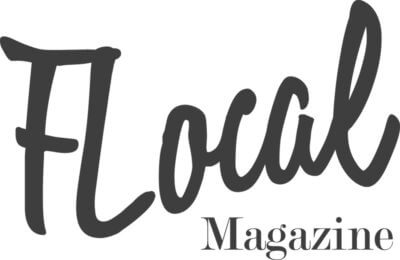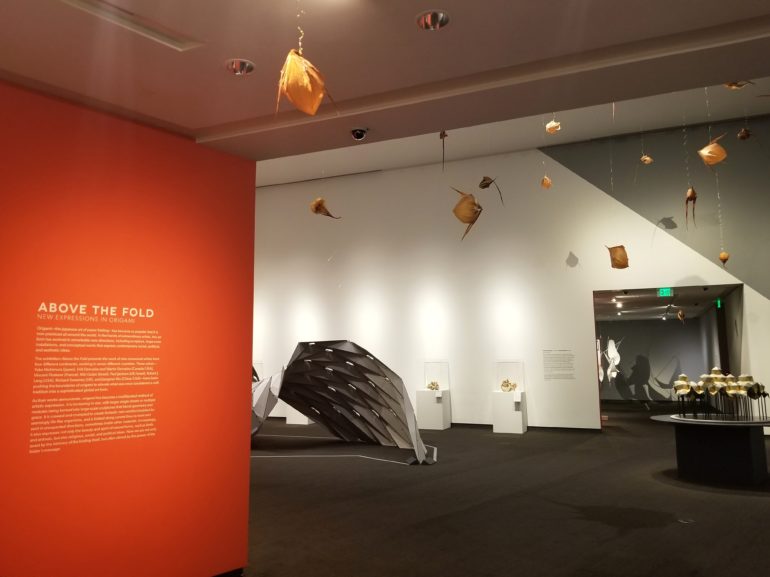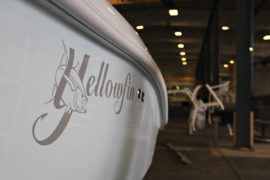Origami is an ancient art form rooted in history and spirituality, but nine international artists in the traveling exhibition Above the Fold: New Expressions in Origami are using light, shadow, nature and even math and science to elevate contemporary origami to a global art form. Even the art itself is being taken to new heights — from riveting pieces suspended from the ceiling to mindbending sculptures that combine the delicacy of paper with the sturdiness of glass. Above the Fold is on view June 22 through Sept. 22 at the Museum of Fine Arts, St. Petersburg, and includes nearly 20 paper-based works of arts in the form of dramatic sculptures, large-scale installations, and conceptual works that express contemporary, social, political, aesthetic, and cultural dialogues. Above the Fold is the first traveling exhibition to bring a group of origami installations and conceptual sculptures from around the world to North American audiences. The MFA is the second-to-last museum to host the exhibition before it concludes in 2020. In Above the Fold, visionary master folders—Erik Demaine and Martin Demaine (Canada/USA), Vincent Floderer (France), Miri Golan (Israel), Paul Jackson (UK/Israel), Dr. Robert J. Lang (USA), Yuko Nishimura (Japan), Richard Sweeney (UK), and Jiangmei Wu (China/USA)—push the boundaries of paper as a medium to create bold, provocative works. Above the Fold is curated by Meher McArthur and the tour is organized by International Arts & Artists, Washington, DC. Origami, literally meaning “paper folding,” has evolved from a Japanese craft into a highly expressive, global art form that intersects and impacts the realms of art and science.
Today, artists all over the world are folding paper into increasingly elaborate and provocative sculptural works, while scientists and mathematicians are using origami to unlock the mysteries of the universe. Here are a few highlights about select artists from the exhibition:
Nishimura, the sole Japanese artist in the exhibition, taps into her architecture and design background to create dramatic pieces where light and shadow interplay on the folded surface of the paper.
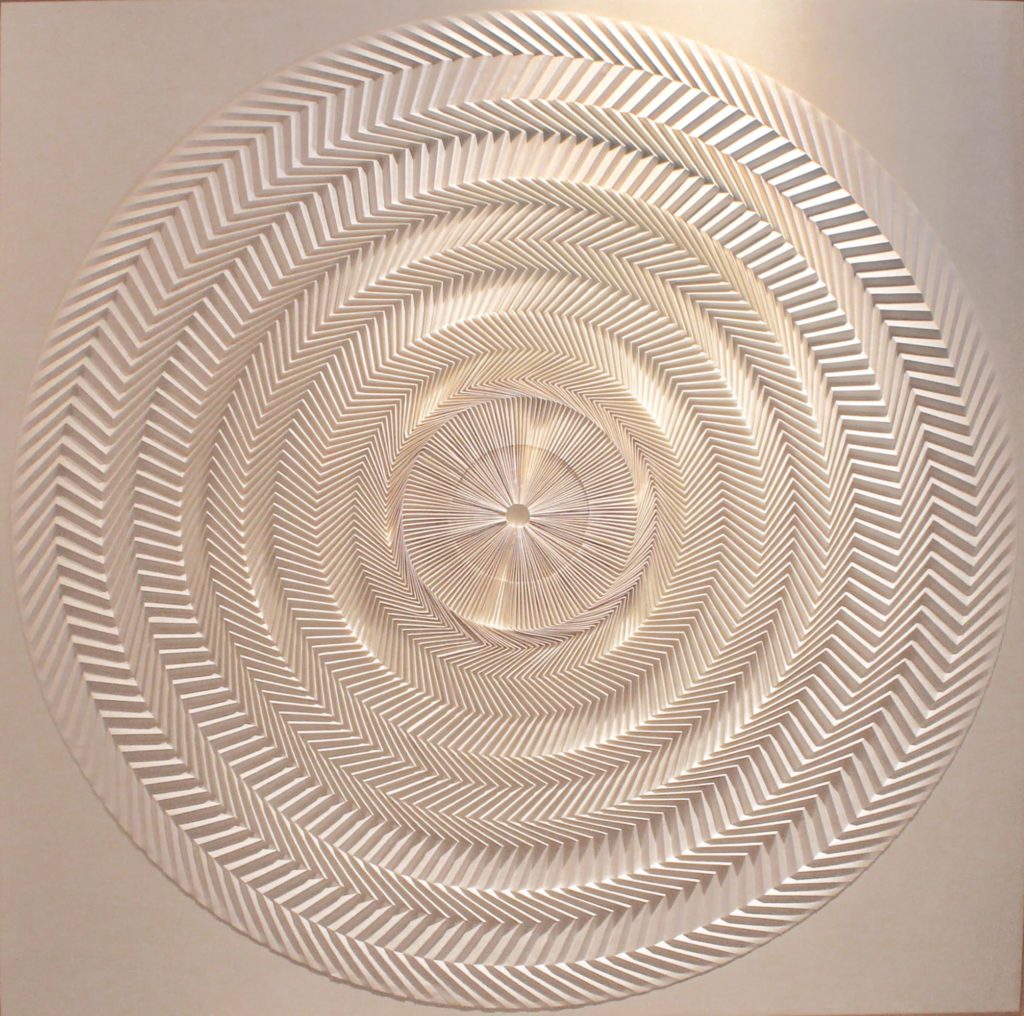
Father and son art-science team, the Demaines, use advanced computer programs and mathematical equations to fold along a curved line rather than a straight one. Martin Demaine is also a glass artist, and a series of the duo’s work features their signature curved paper forms floating inside hand-blown glass.
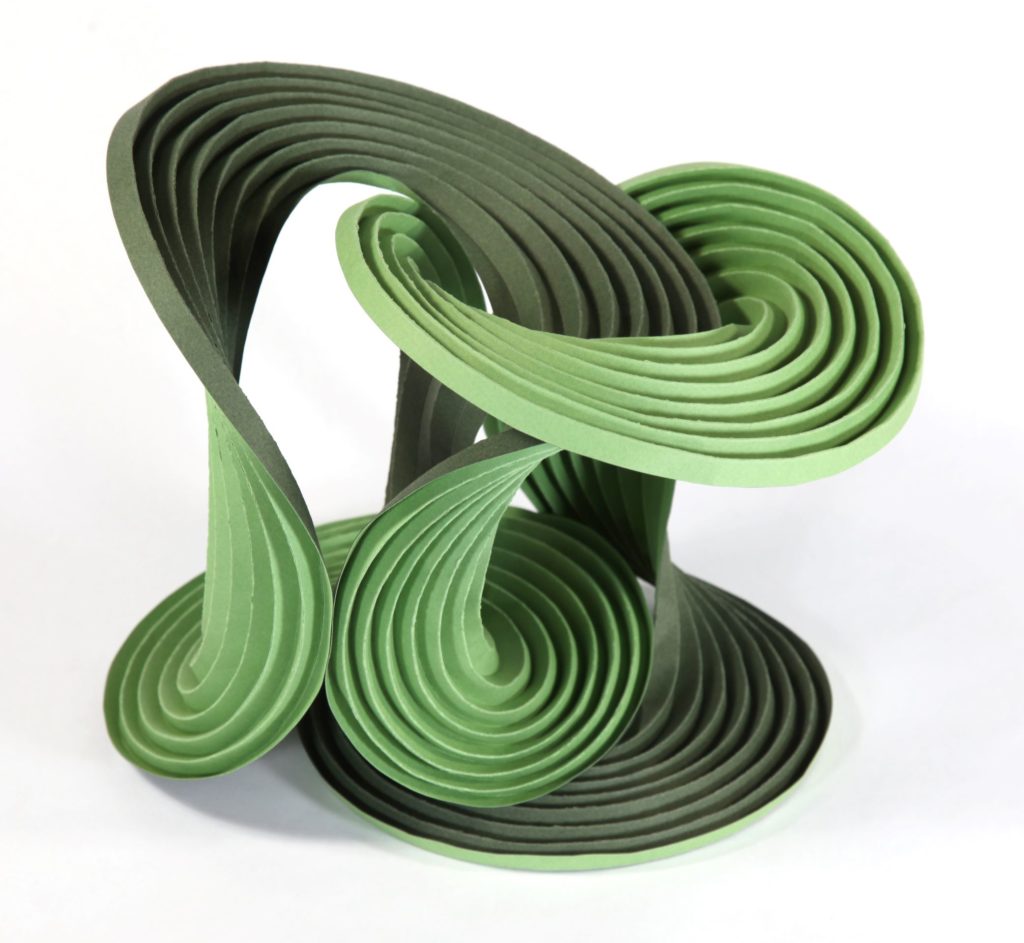
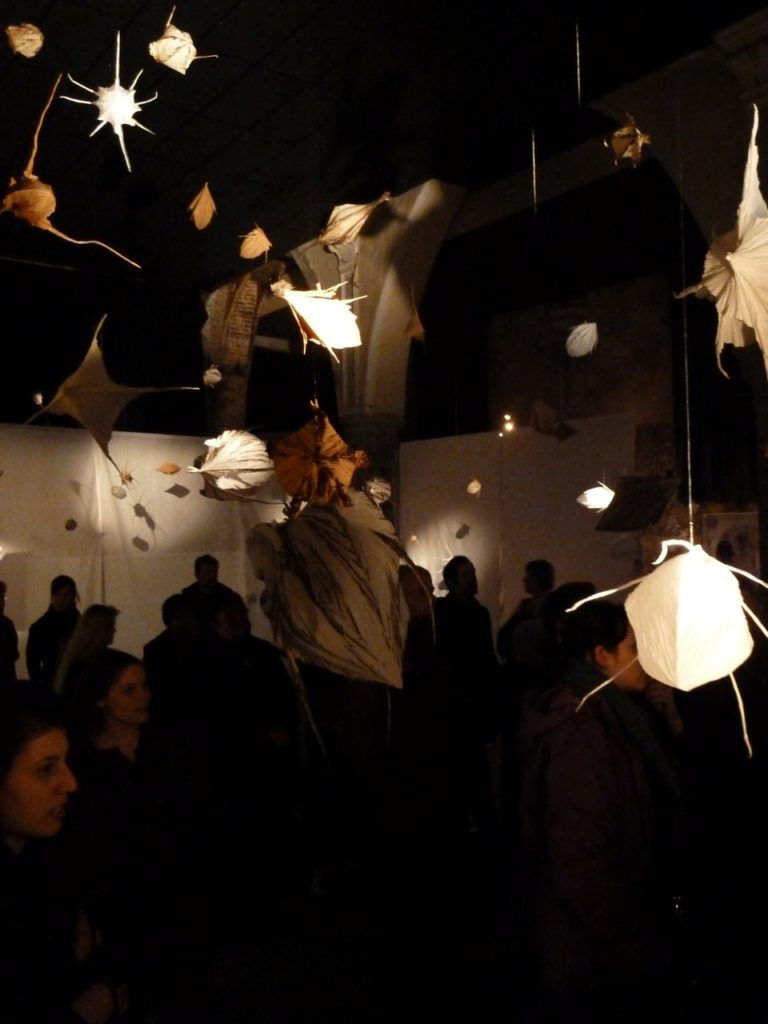
French artist Floderer approaches origami through “crumpling,” dampening and stretching origami paper to create organic and multi-layered forms. The result is 30 to 32 floating, rotating organic models that move via air flow in the gallery.
Dr. Lang, a former NASA physicist, specializes in modular origami, where multiple sheets of paper are folded into individual units—or modules—and combined to form larger, more complex geometric structures. One of his pieces features koi fish forms folded from 60 uncut squares of paper covering 400 to 500 square feet of wall space in the gallery.
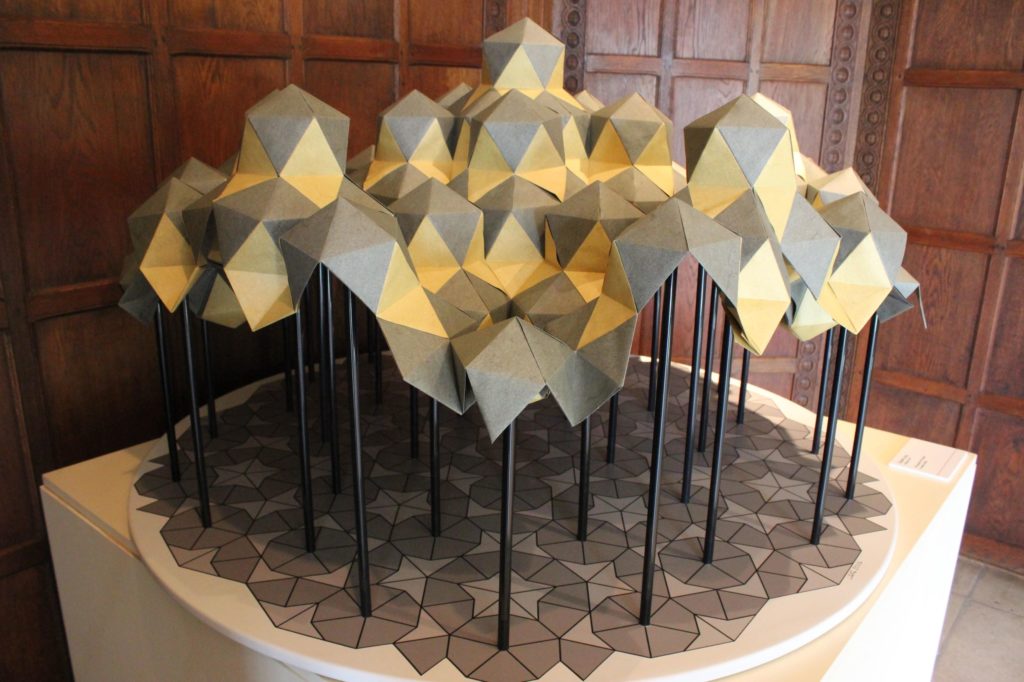
The largest work in the exhibition is a paper sculpture measuring 7 feet tall and 20 feet long created by Wu, assistant professor in design at Indiana University Bloomington. “Paper is a fascinating medium, and we’re excited to present these brilliant contemporary works of art, in such an immersive way, that reflect how origami has evolved as an art form,” said Executive Director Kristen A. Shepherd. “This is one of the MFA’s most ambitious installations, and our guests will be able to experience origami as never before.”
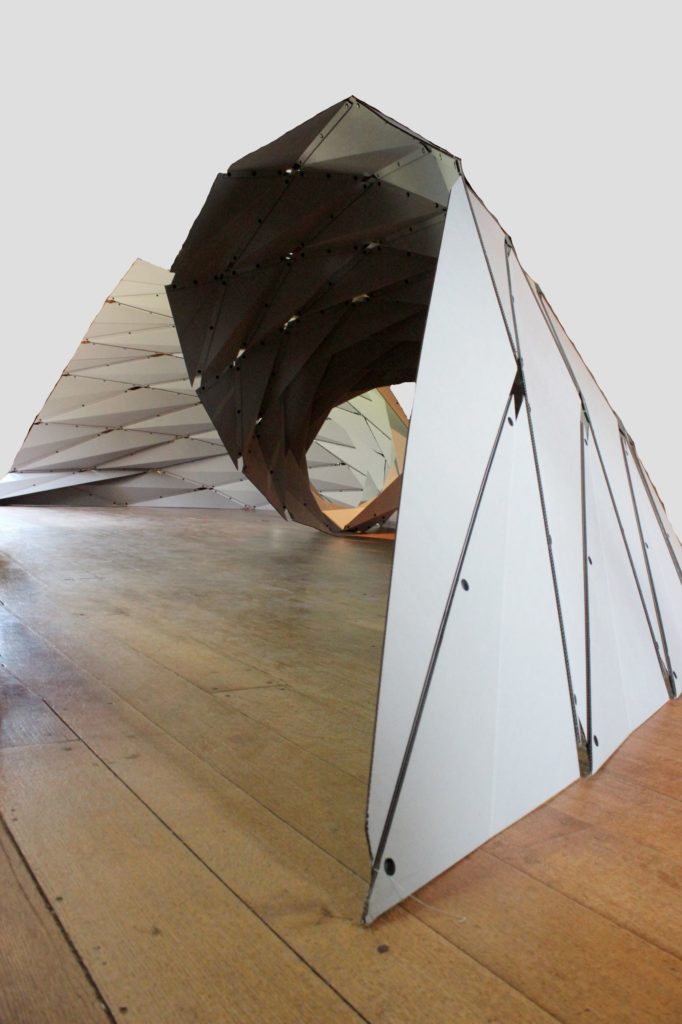
In addition to the captivating paper art, the MFA exhibit will incorporate artwork from its collection, such as Japanese woodblock prints, and other local loans. The gallery will also include a paper-folding interactive space for guests to create paper cranes and other paper patterns. Guests can take the cranes home or leave them on display in the space for the duration of the exhibition. The ones left will be sent to the Children’s Peace Monument in Hiroshima, Japan. The MFA’s goal is to send 1,000 cranes to be placed at the peace monument commemorating Sadako Sasaki and all the children lost to the atomic bombing of Hiroshima.
To purchase tickets to Above The Fold, please click HERE.
